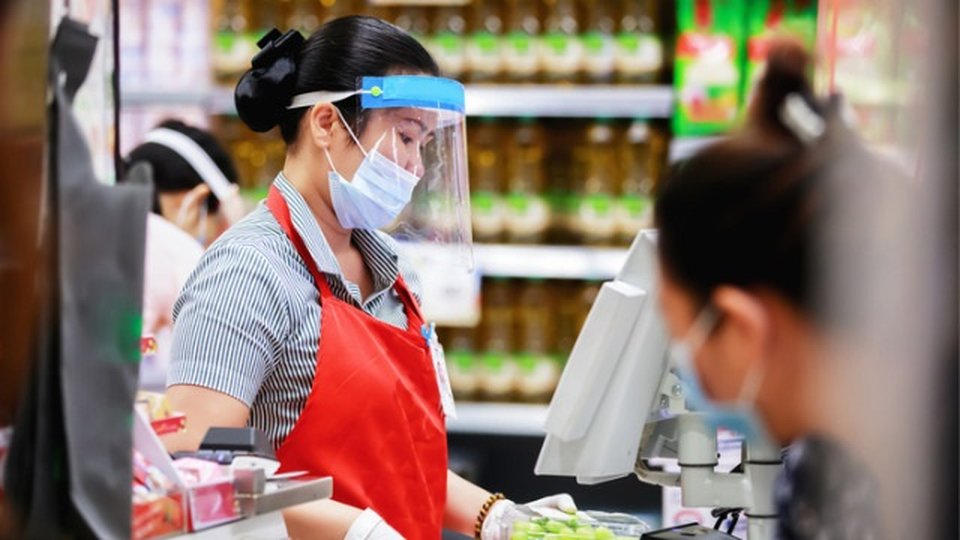Omnichannel
Navigating the new retail experience: A world of change
Chris Hogue, head of strategy and product at LiveArea, explains why experimentation and flexibility is key to retail success.

May 22, 2020 by Chris Hogue — Head of Strategy and Product, LiveArea
Coronavirus effects have been devastating on the economy. Online commerce sales have helped keep some retail businesses afloat, but not enough to offset losses from physical store sales. According to the research firm Forrester, retail sales may see a $2.1 trillion dollar loss globally, reinforcing that physical stores remain an important part of retailers' success.
As countries like China, Germany, Switzerland and some states in the U.S. begin to reopen, it is clear COVID-19's impact on social and business norms will be longstanding. To offset the inconveniences in the shopping experience due to new rules around the use of personal protective equipment and social distancing constraints, retailers are going to have to rely more than ever on well-crafted experiences that move seamlessly between physical and digital mediums.
With this in mind, we have created a three-part series looking at how the retail experience will be altered as a result of shorter-term government mandates and likely longer-term changes in consumer behavior. We'll examine changes to physical stores, changes to the customer experience and the operational changes retailers will need to make to enable the transition discussed in the first two parts.
Part 1: Changes to Physical Stores
As retail stores begin to reopen, they will have three primary obstacles to overcome.
The first will be measures to ensure the safety and well being of staff and customers.
The second will be what they will need to do to make customers feel safe. These first two points are related but the implementation can be quite different.
The third and final challenge discussed here will be adapting the store footprint to better enable services like curbside pickup and more frequent product sanitization.
The first of these challenges is likely the easiest to plan for as much of it will be dictated by federal and/or local governments. Based on what we know so far, below are the most common actions we expect retail stores will need to account for:
- Limiting capacity to 30-40% of maximum number allowed.
- Installing sneeze guards or other protective checkout measures.
- Sanitizing and staffing to clean commonly touched surfaces every few hours.
- Outfitting store associates with masks and gloves.
- Requiring (or not) shoppers to wear personal protective equipment which will mostly follow guidelines within the store's specific country, state or region
In addition to the above, the National Retail Federation's Operation Open Doors initiative has issued comprehensive guidelines and checklists for retailers that help in planning everything from store preparation to bringing back employees.
Different from these physical actions, making shoppers "feel" safe is a much more emotional task, which means retailers need to consider their communication strategy. How do they let shoppers know they will be safe in their stores?
Keeping shoppers safe
Prominently displaying steps being taken and how they will help protect shoppers is a good start. Changes to the sensory experience or store atmosphere are also important when it comes to making people feel safer. For example, brighter lights tend to create the impression the space is natural and healthy. It also speeds shopping behavior, which might be desirable when operating with limited capacity constraints. Reducing access to or the amount of merchandise on the floor, especially testers in health and beauty, lets people know that merchandise hasn't been touched by everyone in the store that day.
Don't underestimate the value actual humans (associates) can have. This goes a bit against minimizing staff recommendations but having friendly, knowledgeable people available to customers with specific needs, questions or concerns helps reassure shoppers that you know what you are doing and that their well being and comfort is a priority.
Finally, retailers must reconsider the footprint of their stores. Specifically, this includes reducing retail (shopping) space as much as 20% to increase operational space.
The hunt is over?
A return to the days where shoppers leisurely hunt through racks and stacks of clothing is unlikely to return anytime soon, if ever. In this new world it's more likely that we'll see associates assist shoppers with styling and locating merchandise pulled from a storeroom in back versus off the floor, operating more like Nike and less like The Gap. Space will also be needed sanitize merchandise that has been tried on or returned.
Changes to consumer shopping behavior, which we'll look at in part 2, will also drive much of the need for more operational space. Desire for services like buy online, pickup in store or curbside pickup were already increasing in popularity but now will be mandated in some states like California just to reopen a store in their second wave. We also expect new buying behaviors, such as buy in store, deliver to home to emerge, further challenging retailers to master their operational capabilities and modify retail floor space to facilitate guided shopping experiences.
As with everything in these unprecedented times, experimentation and flexibility is key to success. These changes should be continually evaluated and updated based on what is most effective in bringing customers into your store and providing a satisfying and safe customer experience.
Chris Hogue is head of strategy and product at LiveArea.
